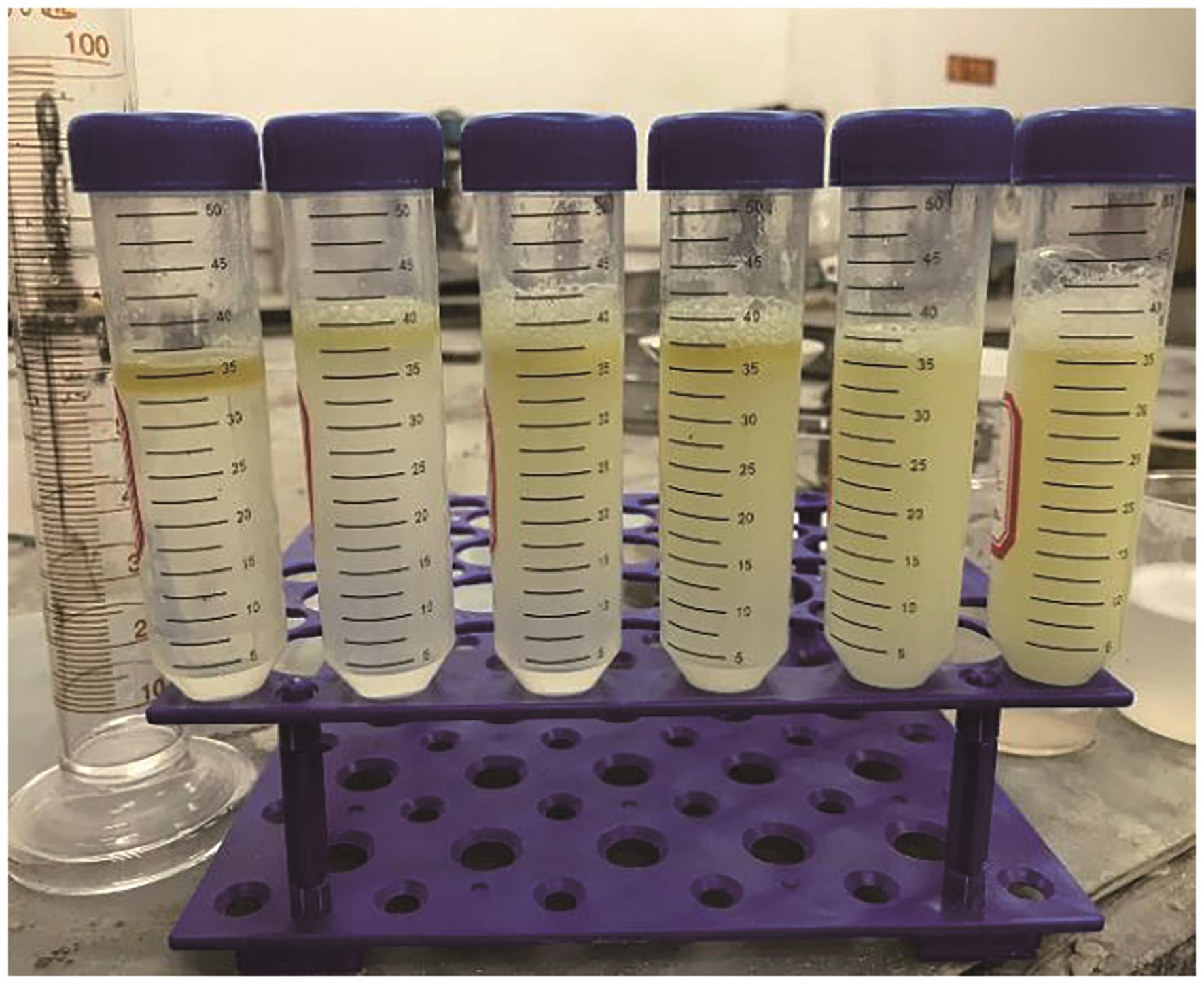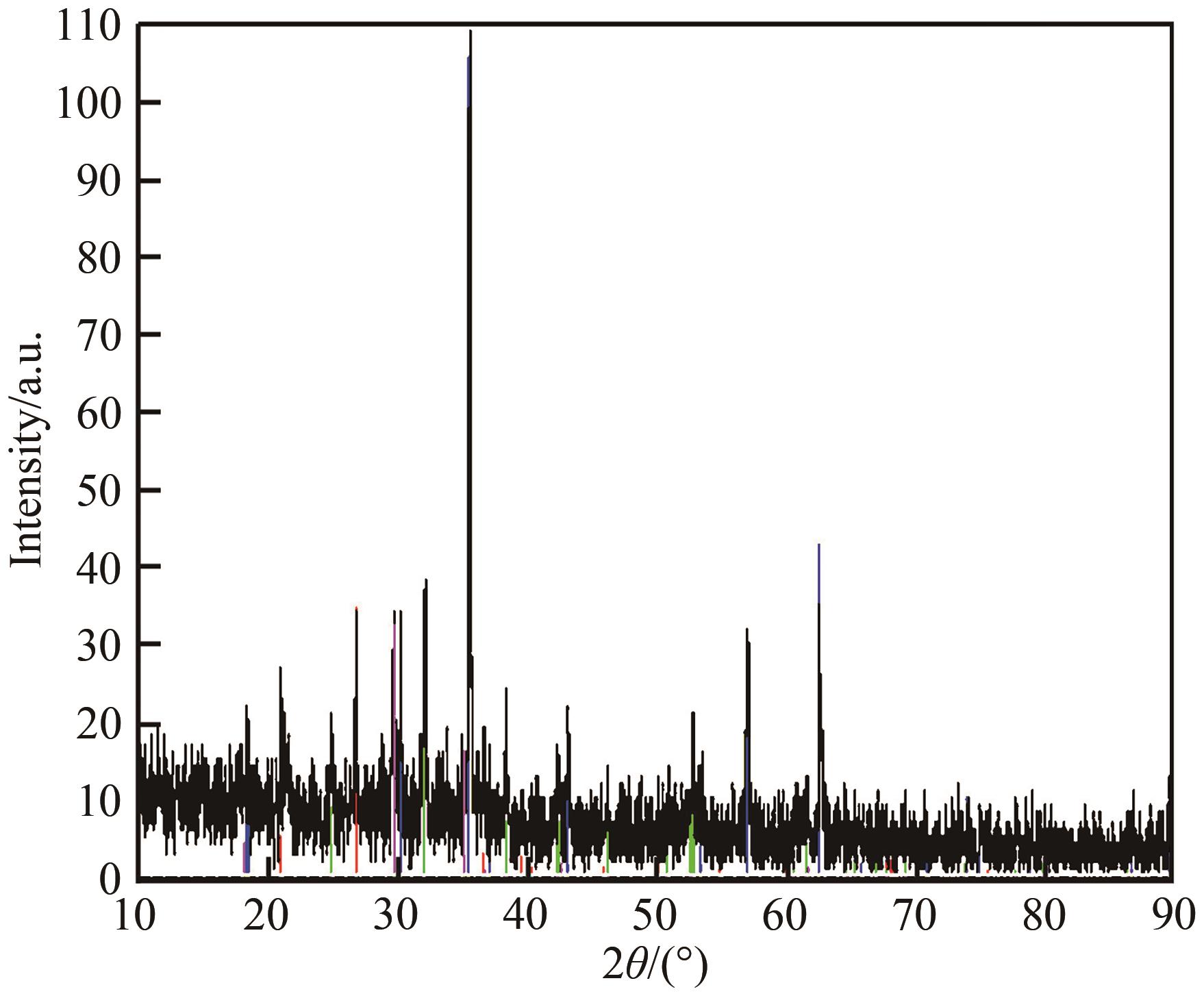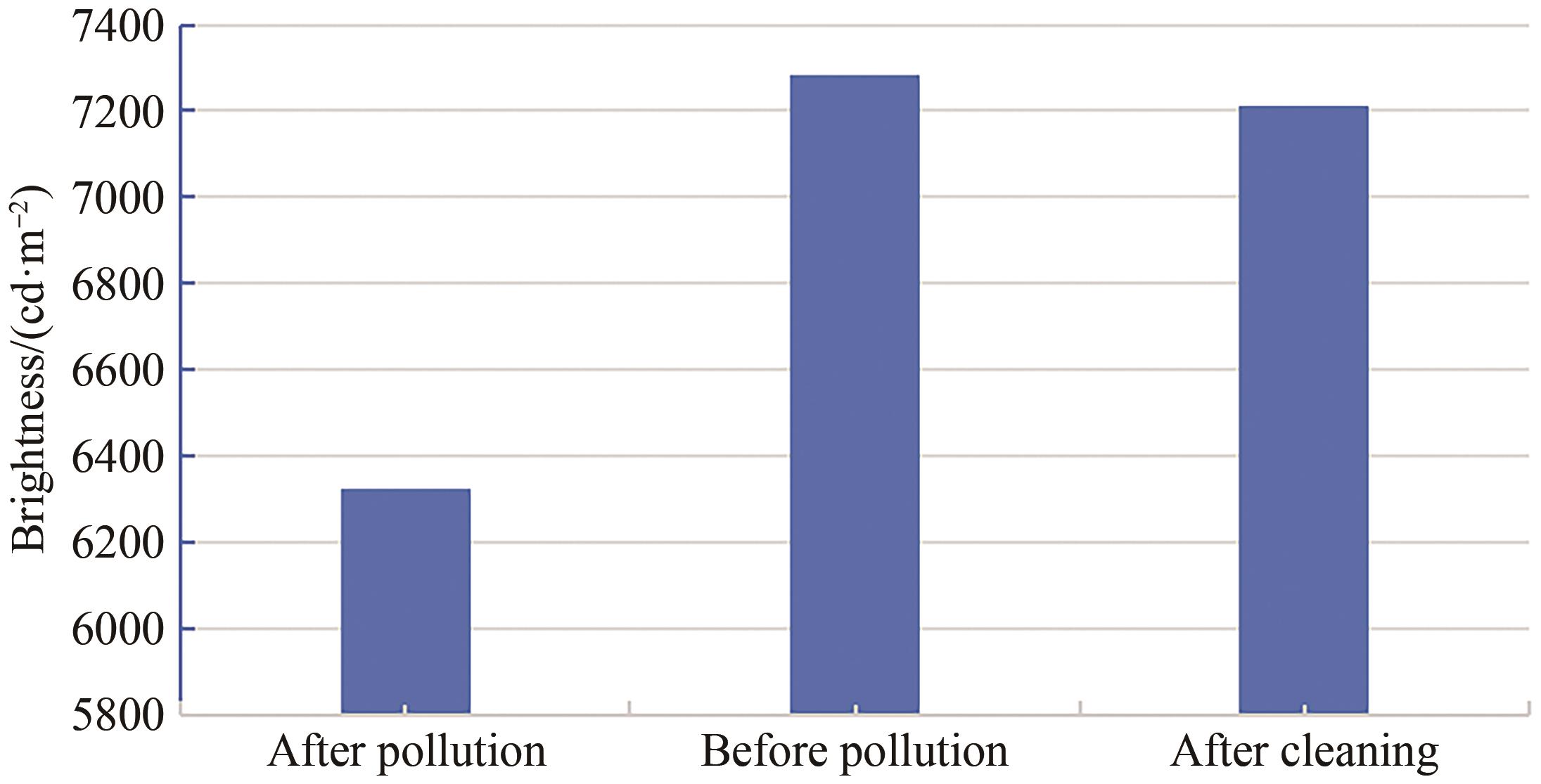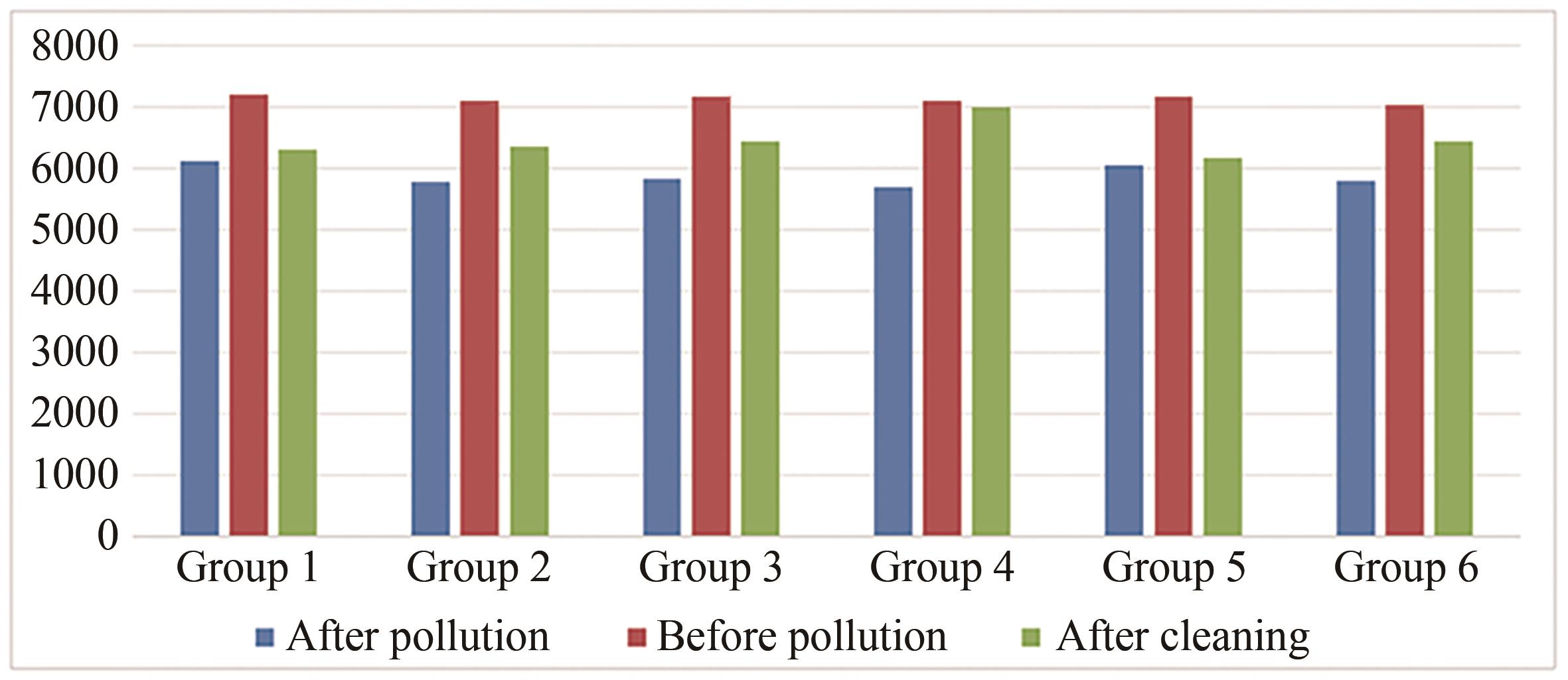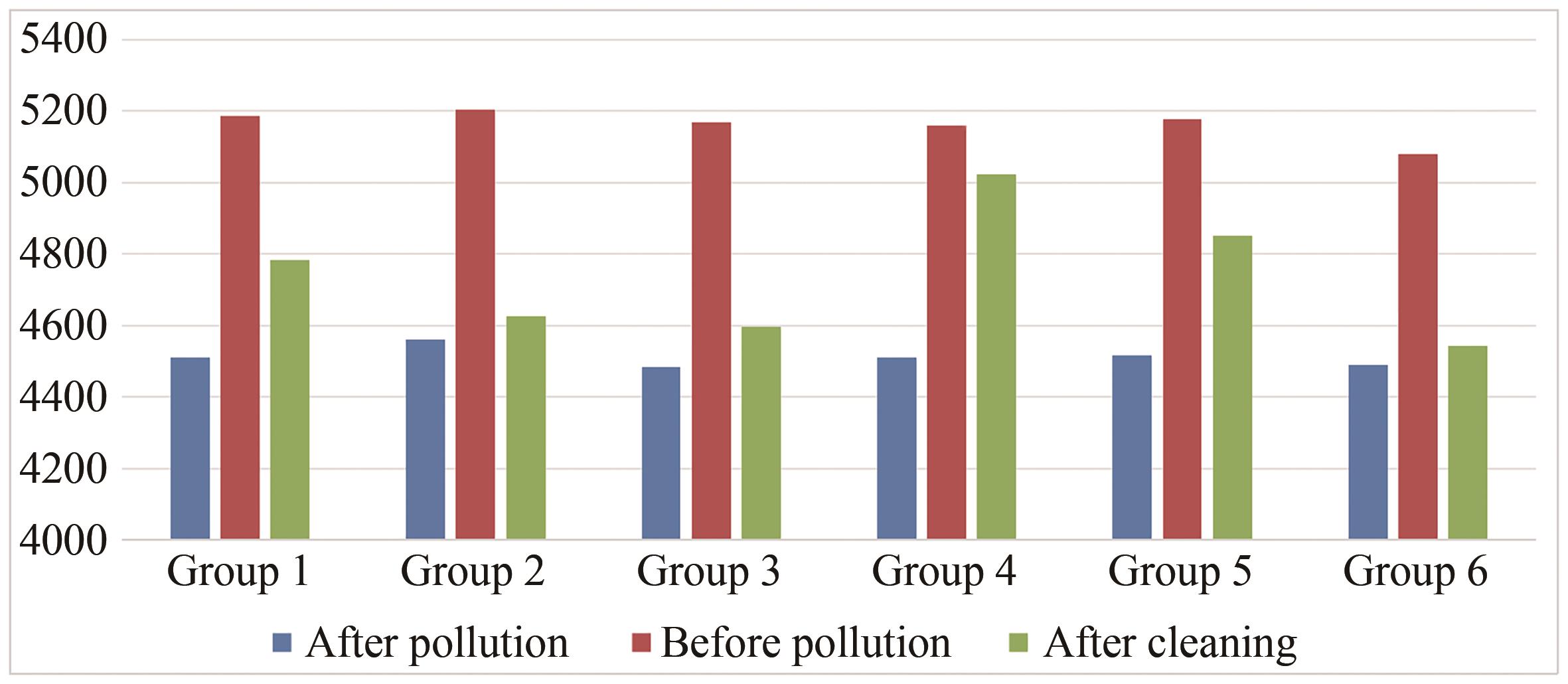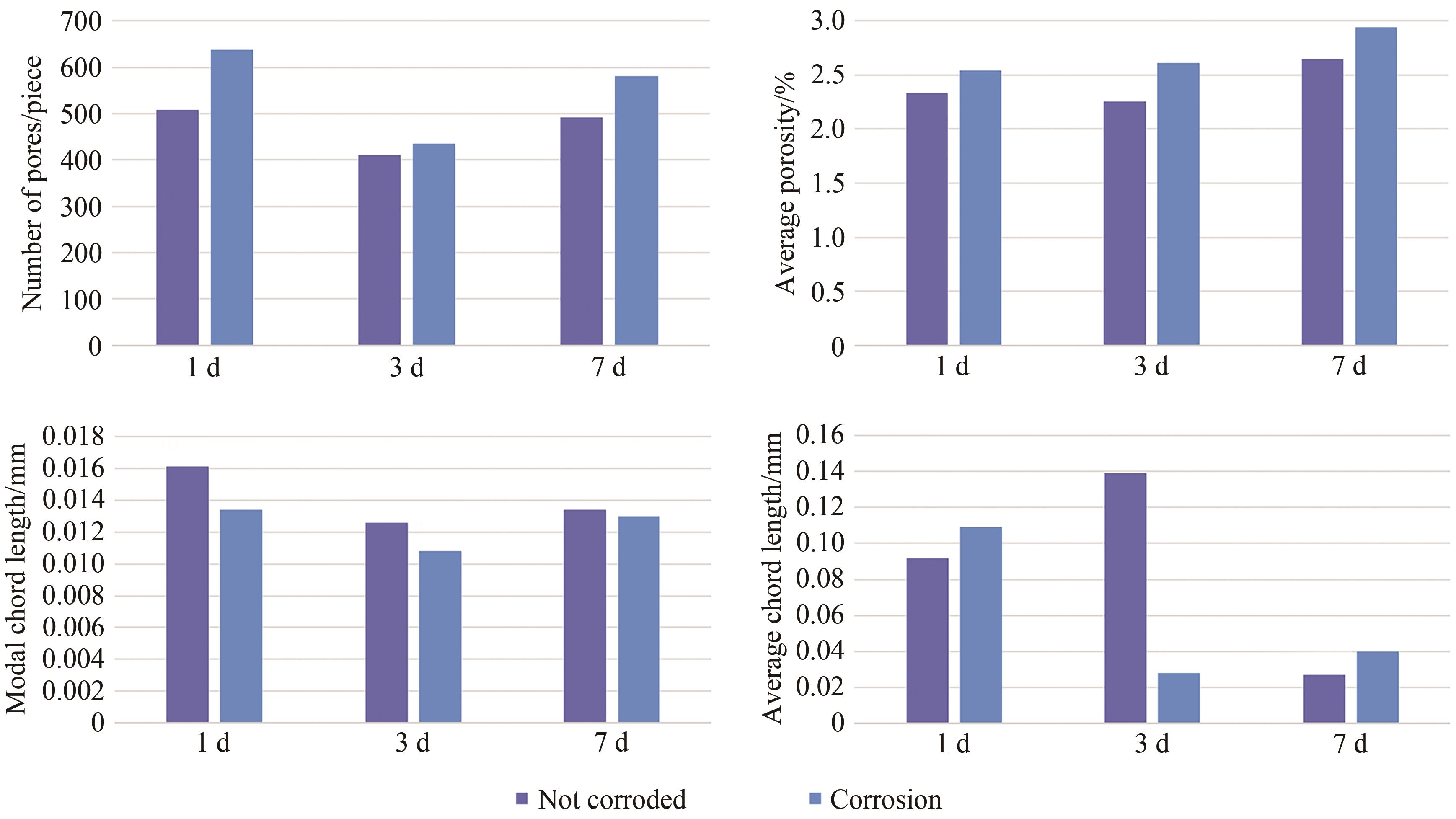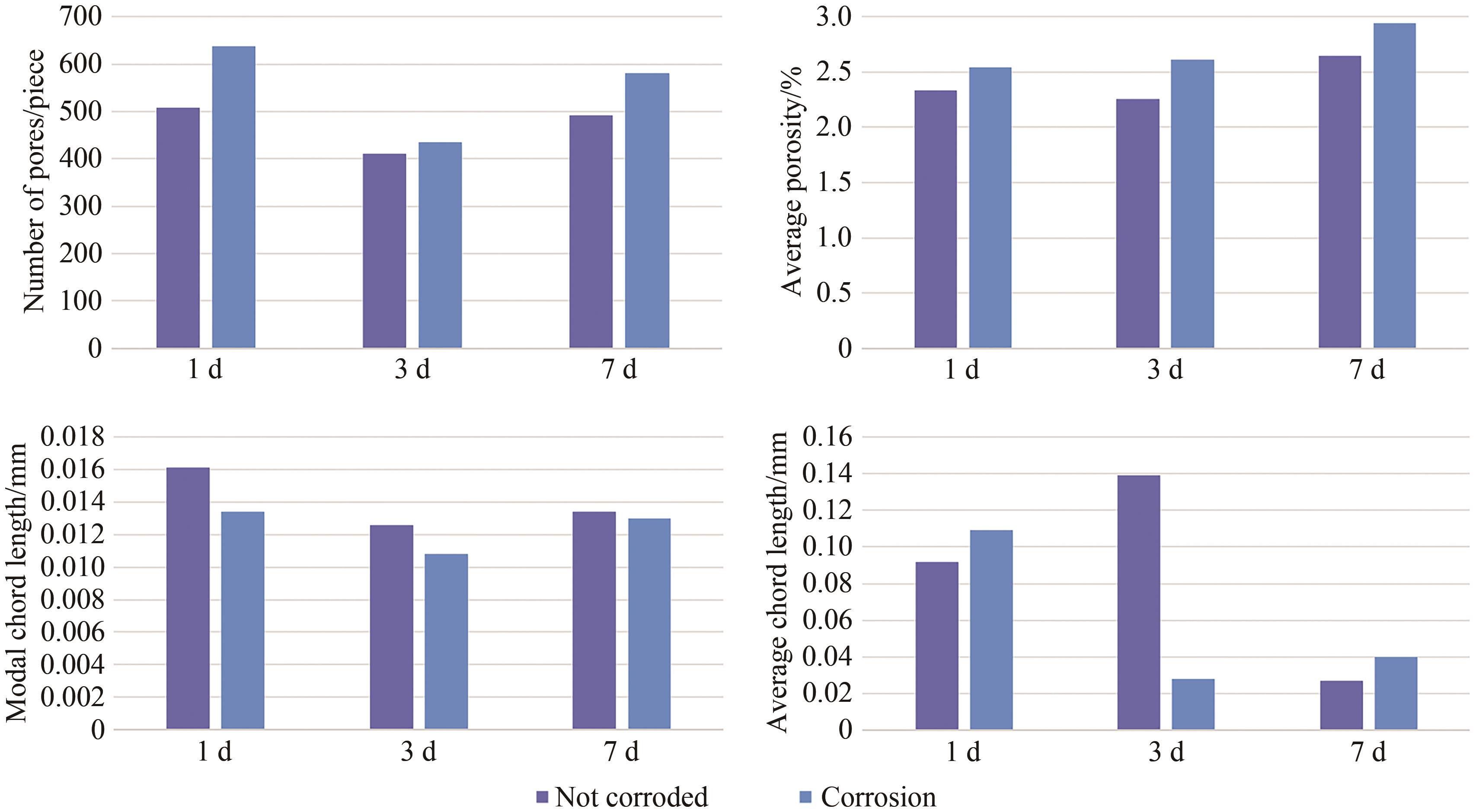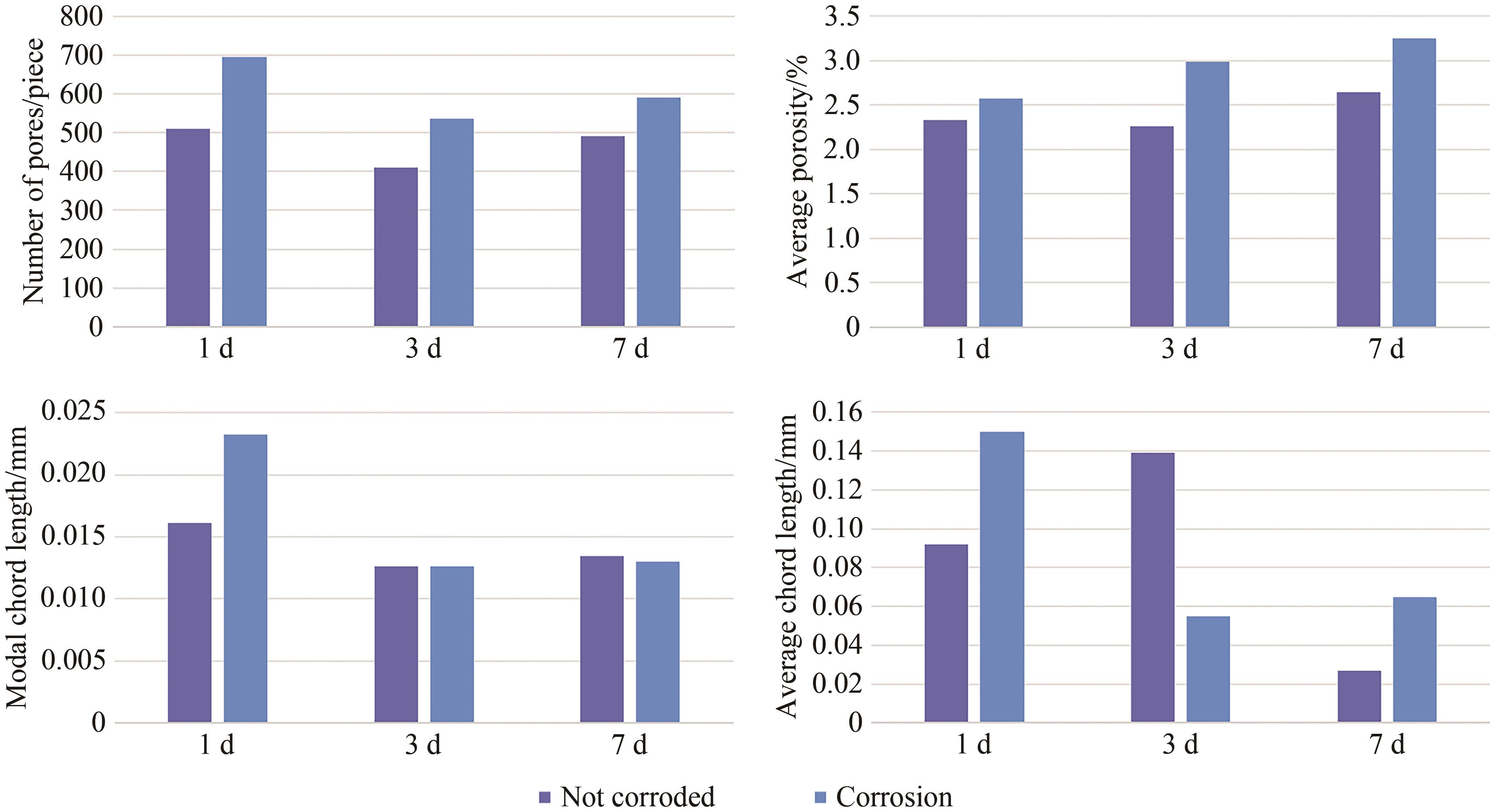
Chinese Journal of Applied Chemistry ›› 2024, Vol. 41 ›› Issue (11): 1585-1595.DOI: 10.19894/j.issn.1000-0518.240121
• Full Papers • Previous Articles Next Articles
Research on the Influence of Surface Pollutant Cleaning Agents on the Performance of High-Altitude Large Volume Concrete
- 1.Department of Construction Engineering,Shanxi Polytechnic College,Taiyuan 030006,China
2.School of Electric Power,Civil Engineering and Architecture,Shanxi University,Taiyuan 030006,China
-
Received:2024-04-12Accepted:2024-09-02Published:2024-11-01Online:2024-12-04 -
Contact:Li LIU -
About author:1315345966@qq.com
-
Supported by:Science and Technology Innovation Program for Higher Education Institutions in Shanxi Province(2022L694)
CLC Number:
Cite this article
Li LIU, Yan-Ying LI. Research on the Influence of Surface Pollutant Cleaning Agents on the Performance of High-Altitude Large Volume Concrete[J]. Chinese Journal of Applied Chemistry, 2024, 41(11): 1585-1595.
share this article
Add to citation manager EndNote|Ris|BibTeX
URL: http://yyhx.ciac.jl.cn/EN/10.19894/j.issn.1000-0518.240121
| Surface active agent | Number | Chelating agent | Surface active agent | Number | Chelating agent |
|---|---|---|---|---|---|
| AEO-9 | a1 | Hydroxyethylenediphosphonic | SDS | b1 | Hydroxyethylenediphosphonic |
| a2 | Citric acid | b2 | Citric acid | ||
| a3 | Sodium D-gluconate | b3 | Sodium D-gluconate | ||
| a4 | Sodium citrate | b4 | Sodium citrate | ||
| a5 | Disodium EDTA | b5 | Disodium EDTA | ||
| a6 | Without | b6 | Without |
Table 1 Selection of chelating agents
| Surface active agent | Number | Chelating agent | Surface active agent | Number | Chelating agent |
|---|---|---|---|---|---|
| AEO-9 | a1 | Hydroxyethylenediphosphonic | SDS | b1 | Hydroxyethylenediphosphonic |
| a2 | Citric acid | b2 | Citric acid | ||
| a3 | Sodium D-gluconate | b3 | Sodium D-gluconate | ||
| a4 | Sodium citrate | b4 | Sodium citrate | ||
| a5 | Disodium EDTA | b5 | Disodium EDTA | ||
| a6 | Without | b6 | Without |
| Test number | Factor (mass fraction) | Experimental indicators | |||
|---|---|---|---|---|---|
| w(AEO-9)/% | w(SDBS)/% | w(citric acid)/% | w(HEDP)/% | R/(mg·m-2·h-1) | |
| 1 | 2 | 2 | 3 | 3 | 1.2 |
| 2 | 3 | 3 | 3 | 4 | 1.5 |
| 3 | 4 | 4 | 3 | 5 | 1 |
| 4 | 3 | 4 | 4 | 3 | 1.4 |
| 5 | 4 | 2 | 4 | 4 | 2.4 |
| 6 | 2 | 3 | 4 | 5 | 1.9 |
| 7 | 4 | 4 | 5 | 3 | 2.6 |
| 8 | 2 | 2 | 5 | 4 | 2.9 |
| 9 | 3 | 3 | 5 | 5 | 2.1 |
| K1 | 2 | 1.9 | 1.23 | 1.73 | |
| K2 | 1.67 | 2 | 1.9 | 2.67 | |
| K3 | 1.77 | 1.77 | 2.53 | 1.67 | |
| R | 0.23 | 0.23 | 1.3 | 1 | |
Table 2 Orthogonal experimental results on rust removal rate of different formulations of cleaning agents
| Test number | Factor (mass fraction) | Experimental indicators | |||
|---|---|---|---|---|---|
| w(AEO-9)/% | w(SDBS)/% | w(citric acid)/% | w(HEDP)/% | R/(mg·m-2·h-1) | |
| 1 | 2 | 2 | 3 | 3 | 1.2 |
| 2 | 3 | 3 | 3 | 4 | 1.5 |
| 3 | 4 | 4 | 3 | 5 | 1 |
| 4 | 3 | 4 | 4 | 3 | 1.4 |
| 5 | 4 | 2 | 4 | 4 | 2.4 |
| 6 | 2 | 3 | 4 | 5 | 1.9 |
| 7 | 4 | 4 | 5 | 3 | 2.6 |
| 8 | 2 | 2 | 5 | 4 | 2.9 |
| 9 | 3 | 3 | 5 | 5 | 2.1 |
| K1 | 2 | 1.9 | 1.23 | 1.73 | |
| K2 | 1.67 | 2 | 1.9 | 2.67 | |
| K3 | 1.77 | 1.77 | 2.53 | 1.67 | |
| R | 0.23 | 0.23 | 1.3 | 1 | |
| RGB value | After pollution | Before pollution | After cleaning |
|---|---|---|---|
| R | 169.3 | 189.5 | 184.2 |
| G | 153.4 | 186.3 | 185.4 |
| B | 149.7 | 185.7 | 183.6 |
Table 3 Average RGB values
| RGB value | After pollution | Before pollution | After cleaning |
|---|---|---|---|
| R | 169.3 | 189.5 | 184.2 |
| G | 153.4 | 186.3 | 185.4 |
| B | 149.7 | 185.7 | 183.6 |
| Formula X | Divide into groups | Additive amount |
|---|---|---|
| AEO-9(3%)+citric acid(5%)+sodium dodecylbenzene sulfonate(2%)+hydroxy-ethylenediphosphonic acid(4%) | The first group | Ammonium citrate 0%+hydroxyacetic acid 5% |
| The second group | Ammonium citrate 1%+glycolic acid 4% | |
| The third group | Ammonium citrate 2%+glycolic acid 3% | |
| The fourth group | Ammonium citrate 3%+glycolic acid 2% | |
| The fifth group | Ammonium citrate 4%+glycolic acid 1% | |
| The sixth group | Ammonium citrate 0%+hydroxyacetic acid 5% |
Table 4 Formulation of metal oxide removal cleaning agent
| Formula X | Divide into groups | Additive amount |
|---|---|---|
| AEO-9(3%)+citric acid(5%)+sodium dodecylbenzene sulfonate(2%)+hydroxy-ethylenediphosphonic acid(4%) | The first group | Ammonium citrate 0%+hydroxyacetic acid 5% |
| The second group | Ammonium citrate 1%+glycolic acid 4% | |
| The third group | Ammonium citrate 2%+glycolic acid 3% | |
| The fourth group | Ammonium citrate 3%+glycolic acid 2% | |
| The fifth group | Ammonium citrate 4%+glycolic acid 1% | |
| The sixth group | Ammonium citrate 0%+hydroxyacetic acid 5% |
| Formula X | Divide into groups | Additive amount |
|---|---|---|
| AEO-9(3%)+citric acid(5%)+sodium dodecylbenzene sulfonate(2%)+hydroxy-ethylenediphosphonic acid(4%) | The first group | Papain 0% |
| The second group | Papain 1% | |
| The third group | Papain 2% | |
| The fourth group | Papain 3% | |
| The fifth group | Papain 4% | |
| The sixth group | Papain 5% |
Table 5 Formula of mold removal cleaning agent
| Formula X | Divide into groups | Additive amount |
|---|---|---|
| AEO-9(3%)+citric acid(5%)+sodium dodecylbenzene sulfonate(2%)+hydroxy-ethylenediphosphonic acid(4%) | The first group | Papain 0% |
| The second group | Papain 1% | |
| The third group | Papain 2% | |
| The fourth group | Papain 3% | |
| The fifth group | Papain 4% | |
| The sixth group | Papain 5% |
| Time/d | Control group/MPa | Cleaning agent X/MPa | Cleaning agent Y/MPa | Cleaning agent Z/MPa |
|---|---|---|---|---|
| 1 | 17.44 | 17.01 | 16.99 | 17.12 |
| 3 | 18.56 | 17.54 | 17.64 | 17.24 |
| 7 | 19.21 | 18.89 | 18.11 | 17.84 |
Table 6 Compressive strength values
| Time/d | Control group/MPa | Cleaning agent X/MPa | Cleaning agent Y/MPa | Cleaning agent Z/MPa |
|---|---|---|---|---|
| 1 | 17.44 | 17.01 | 16.99 | 17.12 |
| 3 | 18.56 | 17.54 | 17.64 | 17.24 |
| 7 | 19.21 | 18.89 | 18.11 | 17.84 |
| 1 | 逄宇帆, 许明奕, 林松, 等. 非离子型表面活性剂的合成方法的研究与市场发展[J]. 应用化工, 2023, 52(2): 546-550. |
| PANG Y F, XU M Y, LIN S, et al. Research and market development of synthesis methods for non-ionic surfactants[J] Appl Chem, 2023, 52 (2): 546-550. | |
| 2 | 何锐, 王铜, 陈华鑫, 等. 青藏高原气候环境对混凝土强度和抗渗性的影响[J]. 中国公路学报, 2020, 33(7): 29-41. |
| HE R, WANG T, CHEN H X, et al. The impact of the climate environment on the strength and impermeability of concrete in the Qinghai Tibet Plateau[J]. J China Highway Eng, 2020, 33(7): 29-41. | |
| 3 | PU W, WANG X, XUE Y Z, et al. Size Distribution and optical properties of particulate matter (PM10) and black carbon (BC) during dust storms and local air pollution events across a loess plateau site[J]. Aerosol Air Quality Res, 2015, 15(6S): 2212-2224. |
| 4 | 苏群山, 武增琳, 吴远超, 等. 饰面清水混凝土自清洁技术研究与应用[J]. 新型建筑材料, 2020, 47(1): 6-11. |
| SU Q S, WU Z L, WU Y C, et al. Research and application of self-cleaning technology for decorative plain concrete[J] New Building Mater, 2020, 47(1): 6-11. | |
| 5 | 王雨, 郑晓宇, 马玉华, 等. 含阴/非双子表面活性剂的金属清洗剂的性能研究[J]. 金属热处理, 2006, 31(9): 95-97. |
| WANG Y, ZHENG X Y, MA Y H, et al. Performance study of metal cleaning agents containing anionic/non gemini surfactants[J] Met Heat Treatment, 2006, 31(9): 95-97. | |
| 6 | 李美利, 钱觉时, 徐姗姗, 等. 养护条件对混凝土表面层性能的影响[J]. 建筑材料学报, 2009, 12(6): 724-728. |
| LI M L, QIAN J S, XU S S, et al. The effect of curing conditions on the performance of concrete surface layer[J]. J Building Mater, 2009, 12(6): 724-728. | |
| 7 | ANTWI P, LI J, MENG J, et al. Feed forward neural network model estimating pollutant removal process within mesophilic upflow anaerobic sludge blanket bioreactor treating industrial starch processing wastewater[J]. Bioresource Technol, 2018, 257: 102-112. |
| 8 | SALGADO K R, CASTRO R F D, PRADO M C, et al. Cleaning ability of irrigants and orange oil solvent combination in the removal of root canal filling materials[J]. Europ Endodontic J, 2019, 4(1): 1-5. |
| 9 | 徐芬莲, 卢佳林, 赵晚群, 等. 卵石型透水混凝土专用复合型添加剂的试验研究[J]. 新型建筑材料, 2014(4): 24-26, 45. |
| XU F L, LU J L, ZHAO W Q, et al. Experimental study on composite additives for pebble permeable concrete[J]. New Building Mater, 2014(4): 24-26, 45. | |
| 10 | 任松, 师燕滑, 姜德义, 等. 干冰清洗对混凝土表面损伤影响分析[J]. 重庆大学学报, 2014, 37(8): 83-90. |
| REN S, SHI Y H, JIANG D Y, et al. Analysis of the effect of dry ice cleaning on concrete surface damage[J]. J Chongqing Univ, 2014, 37(8): 83-90. | |
| 11 | 蒋威, 杜磊, 刘鑫, 等. 玄武岩纤维增强粉煤灰混凝土抗压强度性能研究[J]. 混凝土, 2023(5): 56-60. |
| JIANG W, DU L, LIU X, et al. Study on the compressive strength performance of basalt fiber reinforced fly ash concrete[J]. Concrete, 2023(5): 56-60. | |
| 12 | 杨德讬, 况成部. 清洗剂用螯合剂的研究现状[J]. 现代化工, 1985(2): 25-28. |
| YANG D T, KUANG C B. Research status of chelating agents for cleaning agents[J]. Modern Chem Ind, 1985(2): 25-28 |
| [1] | Hui-Lin YI. Research Progress on the Synthesis of Organic Peroxide in Microreactor [J]. Chinese Journal of Applied Chemistry, 2024, 41(11): 1535-1551. |
| [2] | Bing-Qin LIU, Yan-Hua WANG. Thermoregulated Phase-Transfer Catalysis System for Hydrogenation of α,β -Unsaturated Ketones at Atmospheric Pressure [J]. Chinese Journal of Applied Chemistry, 2024, 41(9): 1350-1356. |
| [3] | Xiang-Chun ZHANG, Heng-Bo MAO, Zi-Xuan LUO, Bin WEI, Jing-Hua WANG. Method for the Formation and Determination of Characteristic Parameters of Medium Phase Microemulsion [J]. Chinese Journal of Applied Chemistry, 2024, 41(8): 1175-1183. |
| [4] | De-Hong YANG, Yang YANG, Kun WANG, Wen-Jie FAN, Fang HE, Liu-Xue ZHANG, Yao-Min ZHAO. Explosives & Propellants and Chemistry [J]. Chinese Journal of Applied Chemistry, 2023, 40(6): 916-922. |
| [5] | Qin-Qin TIAN, Jia ZHANG, Zhi CHEN, Wei HE, Sheng-Yong ZHANG. Progress in Synthesis, Detection and Clinical Application of Posaconazole [J]. Chinese Journal of Applied Chemistry, 2022, 39(8): 1177-1189. |
| [6] | Ya-Li FENG, Lie-Jin ZHOU, Zhong-Yan CAO. Transition Metal⁃Catalyzed Cross⁃Coupling Reactions of Alkenyl Fluorides: Advances and Perspectives [J]. Chinese Journal of Applied Chemistry, 2022, 39(5): 749-759. |
| [7] | Lin-Jie SHANG, Jiang LIU, Ya-Qian LAN. Covalent Organic Framework Materials for Photo/ Electrocatalytic Carbon Dioxide Reduction [J]. Chinese Journal of Applied Chemistry, 2022, 39(4): 559-584. |
| [8] | Ou-Wen HE, Chang-Fu SUN, Hong-Bing YU. Optimization on the Production of Furfural from Corncob in Cheap Ionic Liquid System [J]. Chinese Journal of Applied Chemistry, 2022, 39(02): 272-282. |
| [9] | YANG Yu-Ping, XU Shao-Hong, MA Guo-Yang, JIAO Li-Ming, SUN Li-Ping, XIA Ran. Synthesis of 5-Deuterated Ribavirin Derivative [J]. Chinese Journal of Applied Chemistry, 2021, 38(8): 911-916. |
| [10] | ZHOU Yao, LUO Ziqing, ZHOU Jialing, YUAN Lin, LI Zhongyan. Dipeptide-Based Phase-Selective Gelators for Removal of Oils and Toxic Dyes from Water [J]. Chinese Journal of Applied Chemistry, 2020, 37(11): 1276-1284. |
| [11] | QIN Yanfang, QI Yong, HUANG Yuejun, HOU Yingjie, AN Yu, ZHANG Dengke, HAN Yunke, PAN Jigang. Microwave-assisted Synthesis of Cu(Ⅱ)meso-Tetra (Schiff-base substituted phenyl)porphyrins [J]. Chinese Journal of Applied Chemistry, 2015, 32(1): 53-59. |
| [12] | HU Tie1,2, PI Shaofeng1, WANG Ye1, GAO Haili1, SUN Hanzhou1*, LI Jilie1*. Synthesis of Irone by Cyclization Reaction [J]. Chinese Journal of Applied Chemistry, 2014, 31(11): 1297-1301. |
| [13] | LUO Shixia1*, CHEN Xuan1, ZHANG Xiaoyi1, ZHU Huaiwu1, WEI Gang1*. Synthesis, Ion recognition, and Extraction Properties of Propanedithioether Linked Bis-β-diketone Molecule [J]. Chinese Journal of Applied Chemistry, 2014, 31(09): 1063-1068. |
| [14] | YANG Qingcui1,2, SUN Xiaohong1,3*, LIU Yuanfa4, CHEN Bang4, SHEN Shengqiang3. Synthesis and Antifungal Activity of Schiff Bases of 5-Ethoxycarbonylmethylsulfanyl-1,2,4-triazole [J]. Chinese Journal of Applied Chemistry, 2014, 31(07): 788-792. |
| [15] | CHEN Min, DENG Zhijun*, ZHANG Liben, LI Xiaogang . Metal-mediated Activators Generated by Electron Transfer for Atom Transfer Radical Polymerization of Methyl Methacrylate with Basic Ionic Liquids as the Catalyst [J]. Chinese Journal of Applied Chemistry, 2014, 31(05): 553-559. |
| Viewed | ||||||
|
Full text |
|
|||||
|
Abstract |
|
|||||

